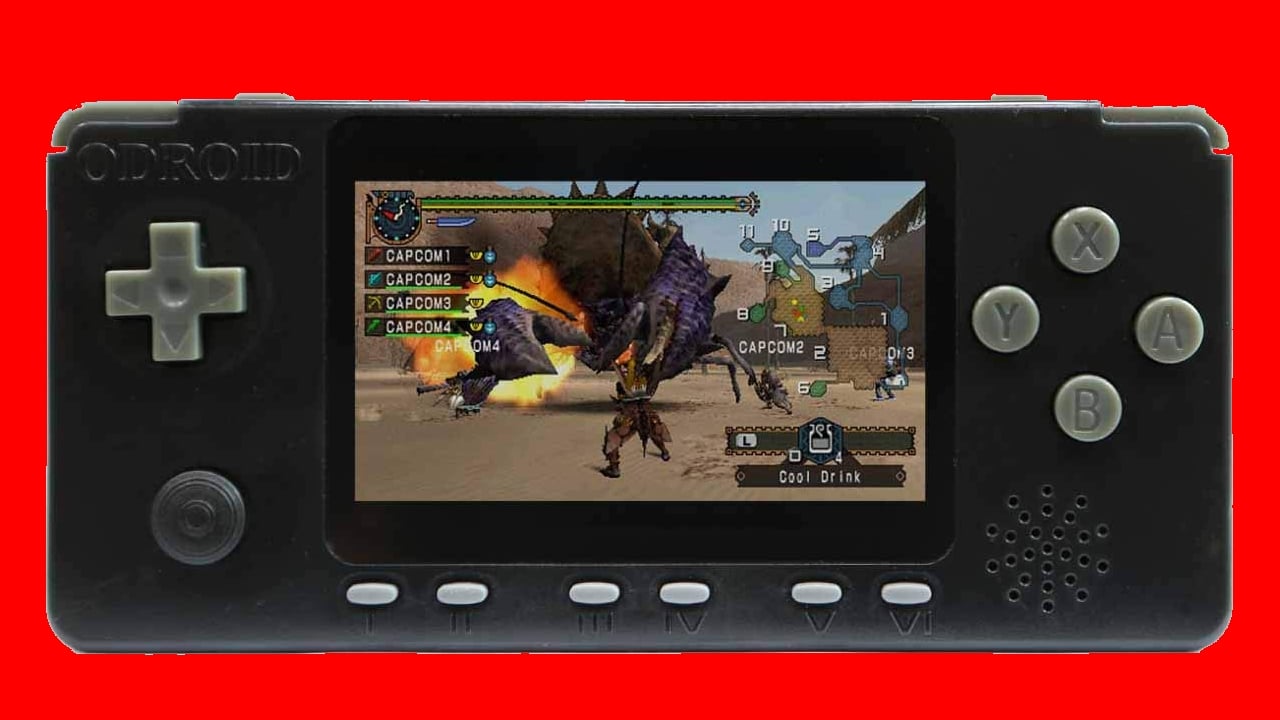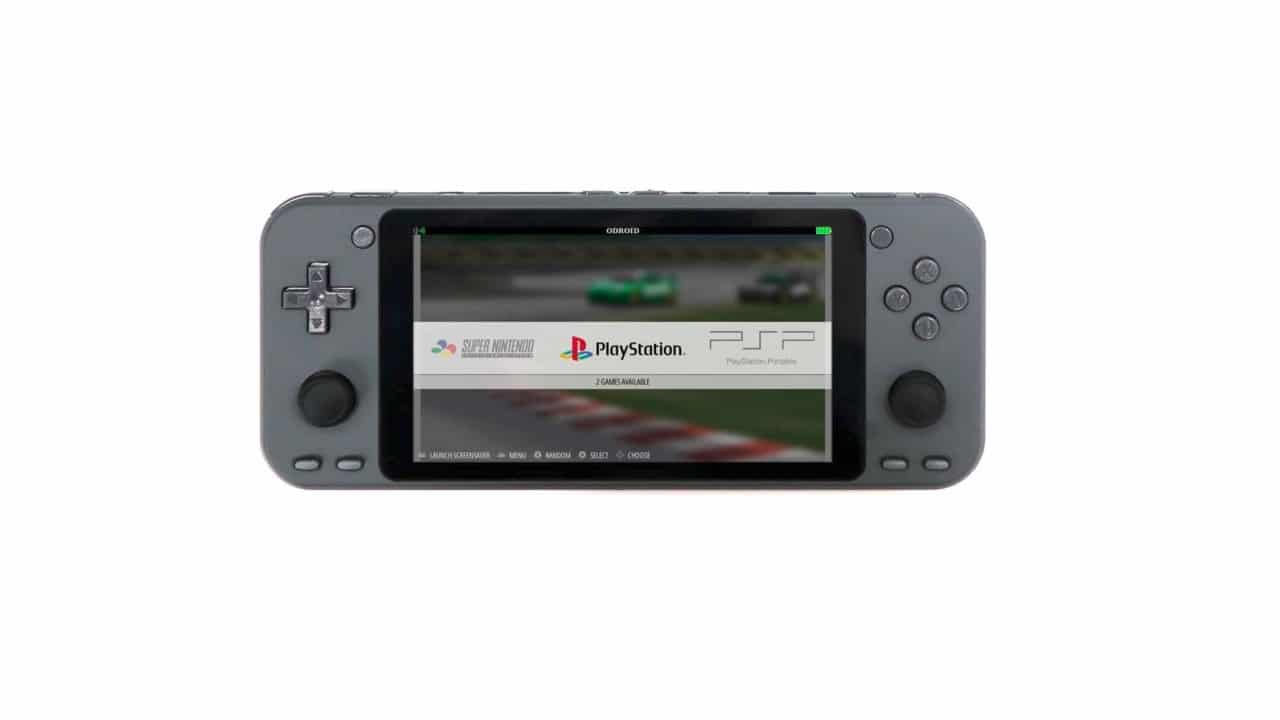
El Manufacturer HardKernel, a direct competitor of Raspberry Pi y Arduino, with its own alternatives to the original SBC and development boards, has been surprising for years with solutions that could fill the gap left by the big two. In addition, they have also designed and marketed some very practical solutions for the DIY world that makers love, such as the Odroid GO.
This is a kit for build a portable console cheap and with a large screen, good battery life, and analog sticks and buttons for gaming. So you can enjoy multitude of retro titles, making use of emulators.
What is Odroid Go?
Odroid Go is a modern portable console, such as some such as Sony's PSP, or Valve's Steam Deck. But it has more to do with old consoles than with current ones, since it is designed to use emulators and run your favorite retro video games.
This console does not come assembled, but HardKernel offers it in kit form, so you can easily build it yourself. Something that the most handy people in the house will love, and that will help them understand more about how this device works. And, as is usual in these projects, it also has pins to use for whatever you want, both to add gadgets and to program them with a specific function. Therefore, it is hackable.
Odroid Go Versions and Technical Features
Inside the Odroid Go there are two versions that can be chosen in turn in two variants. The available possibilities and their technical characteristics are:
- Odroid Go Advance Black Edition: It is the oldest version of HardKernel, and which has already been deprecated. Its price was $59.
- Aurora Black:
- SoC: RockChip RK3326 with 35-bit 1.3GHz quad-core ARM Cortex-A64 and Mali-G31 Dvalin GPU-
- RAM: 1GB (DDR3L at 786Mhz, and 32 Bits of bus width)
- Storage: SPI flash type (16 MB for Boot) and microSD card slot with UHS-1 support for high-capacity, fast-access storage to host the operating system, emulators, and games.
- Screen: 3.5 inches and 320×480 resolution, with TFT LCD panel (ILI9488, MIPI interface)
- Audio: with headphone jack and built-in 0.5W mono speaker.
- Battery: 3.7V 3000 mAh Li-Po to last up to 9 hours of non-stop gaming. It charges in about 2.5 to 3 hours if it's off, and 4 to 5 hours if you have the Odroid Go on.
- Power adapter: 5V DC Jack, and USB-C connector, with cable included in the package.
- IS: with USB 2.0 Host, 10-pin type I2C, GPI, and IRQ at 3.3V.
- input buttons: F1, F2, F3, F4, F5, F6, A, B, X, Y, direction pad, and two soulders on the left and two on the right, as well as analog stick.
- Connectivity: WiFi at 2.4 Ghz type IEEE 802.11b/g/n (ESP-WROOM-S2 module).
- Dimensions and weight: 155x72x20 mm and 180 bunches.
- Clear white:
- A version with transparent casing.
- *Same technical characteristics as Aurora Black.
- Aurora Black:
- Odroid GoSuper: it is the most modern version, and still for sale. It is more expensive than the previous one, since its starting price is $80 per unit, with discounts if you buy it in large quantities. It is being marketed from the end of 2021.
- Dim gray:
- SoC: RockChip RK3326 with 4 ARM Cortex-A35 CPU cores at 1.3Ghz 64-bit and Mali-G31 MP2 GPU.
- RAM: 1GB type DDR3L at 768Mhz with a 32-bit bus bandwidth.
- Storage: SPI flash with 16 MB for boot, and UHS-1 compatible microSD slot for using high-speed, multi-gig cards. There you can install the operating system, emulators and the games you want.
- Display: 5-inch TFT LCD panel, with 854×480 px resolution. With wide viewing angle and MIDI-DSI interface.
- Audio: stereo with headphone jack and integrated mono speaker of 0.5W power and 8Ω.
- Battery: 3.7V Li-Po, with a 4000 mAh capacity for great autonomy of up to 10 hours of uninterrupted play. It takes 3.4-4 hours to charge if the Odroid Go is off, charging while it's on can take 4.5-5.5 hours.
- power adapter: DC 5v jack, USB-C connection with cable included in the package. The maximum accepted current is 1.5A.
- IS: It has a USB 2.0 Host port, and 10 I2C pins, GPIO, and IRQ at 3.3v.
- Buttons: F1, F2, F3, F4, F5, F6, A, B, X, Y input, directional pad, 2x left and right shoulder, and two analog sticks.
- Connectivity: optional USB Wi-Fi adapter
- Operating System: Ubuntu 18.04 to 20.04 with Linux kernel 4.4 for AArch64.
- Emulator: a station with front-end modified with Libretro.
- graphic API: Accelerated by OpenGL-ES DRM-FB.
- Dimensions and weight: 204x86x25 mm and 280 grams.
- Clear white:
- A version with clear casing.
- *Same technical characteristics as Dim Gray.
- Dim gray:
Where to buy Odroid Go
Unfortunately, the console Odroid Go Advance portable was discontinued, and it is out of stock in many stores, so it will be difficult for you to find it new somewhere. The one that is still available is the Odroid Go Super, on the official HardKernel website. But what you can do is opt for other alternatives if you prefer, even if you already have a Raspberry Pi, you can buy the kit to turn it into a portable retro game console with these Amazon kits.
Odroid Go Usage Wiki – Here the start guide
